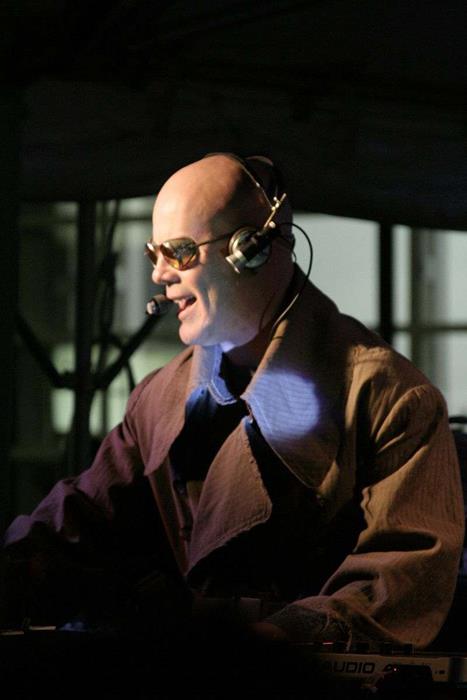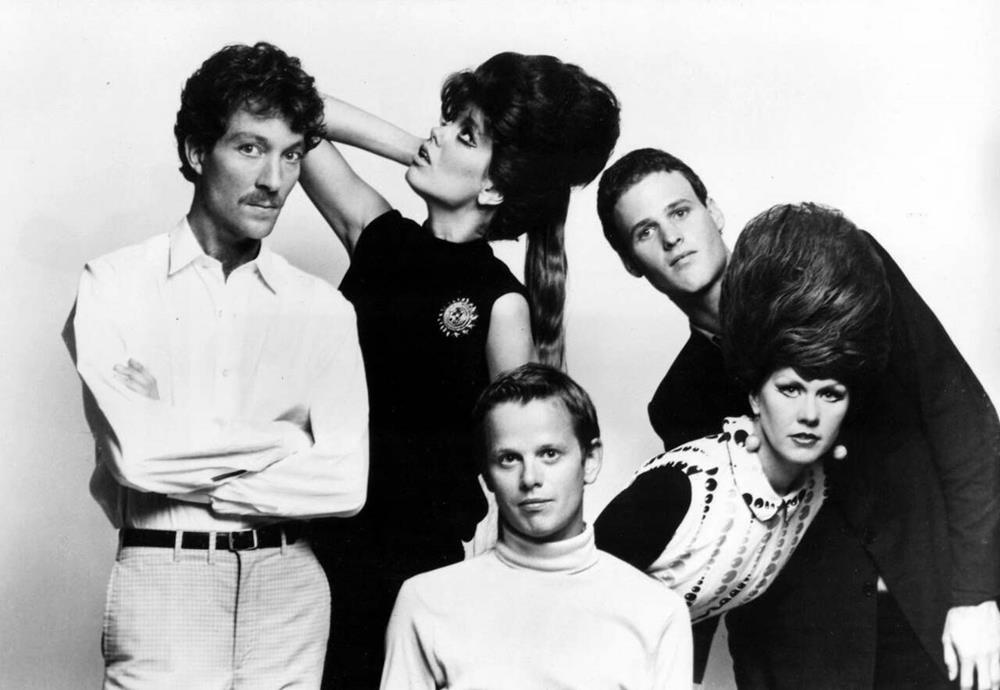The 1980s were a golden era of innovation in music, birthing tracks that ranged from the iconic to the downright weird. This period in music history was not just about the rise of new genres but also about songs that left indelible impacts on pop culture, challenging the norms and setting new trends.
In this article, we’ll explore some of the most eccentric and unusual songs from the 80s, shedding light on how these oddities contributed to the rich mosaic of 80s music and why they continue to captivate and intrigue us decades later. Join us as we discover the stories behind these peculiar tunes and their lasting legacy in the world of music.
“She Blinded Me with Science” by Thomas Dolby
Thomas Dolby’s “She Blinded Me with Science” is an effervescent blend of synth-pop and funk, marked by its playful use of electronic sounds and a memorable shout of “Science!” that punctuates the track. The song, released in 1982, cleverly marries catchy pop hooks with lyrics that celebrate a fascination with science, standing out as a whimsical ode to the technological optimism of the era.
Its accompanying music video, set in a home for deranged scientists, adds a layer of quirky charm, with Dolby portraying a mad scientist—a visual that perfectly complements the song’s eccentricity. If you are also a game aside from being a music lover, you may also find the post about the games that defined the 80’s interesting.
“Funkytown” by Lipps, Inc.
“Funkytown” by Lipps, Inc. is a disco anthem that captured the imagination of a generation looking to dance their worries away. Released in 1980, the song’s infectious beat and the repeated longing to move to “Funkytown” struck a chord with listeners worldwide, becoming synonymous with the era’s disco fever. Its pulsating rhythms and catchy chorus made it a staple on dance floors and a symbol of the quest for a utopian place where fun and music reign supreme. If you’re looking for more contributions to an 80s playlist, check out some of these top underground music artists of the 80s.
“19” by Paul Hardcastle
Paul Hardcastle’s “19” is a haunting commentary on the Vietnam War, particularly the young age of the soldiers who fought in it. Released in 1985, the song utilizes sampled news reports and a synthesizer-driven beat to create a powerful anti-war message, underscored by the repeated refrain of the average age of combat soldiers in Vietnam. If you’re interested in the one-hit wonders of 80s British music, this work is definitely worth a listen. The track stands out for its innovative use of sampling technology, bringing the grim reality of war into the dance music landscape and leaving a lasting impact on its listeners.
“Respect Yourself” by Bruce Willis
Bruce Willis surprised many when he stepped out of his acting persona to release “Respect Yourself” in 1987. The song, a cover of The Staple Singers’ classic, showcases Willis’s unexpected musical talent, blending blues, R&B, and a touch of pop. His rendition brought a new energy to the empowering lyrics, encouraging listeners to respect themselves and others. The transition from screen to music charts demonstrated Willis’s versatility and helped cement the song as a memorable moment of the 80s.
“The Curly Shuffle” by Jump ‘N The Saddle Band
“The Curly Shuffle” by Jump ‘N The Saddle Band is a novelty song released in 1983 that pays homage to Curly Howard of The Three Stooges. With its catchy swing rhythm and humorous lyrics mimicking Curly’s well-known catchphrases and antics, the song became an instant favorite among fans of the comedy troupe and those appreciating the lighter side of music. The track’s playful nature and the band’s enthusiastic performance capture the spirit of the Stooges’ slapstick comedy, making it a delightful oddity of the 80s music scene.
“Rock Lobster” by The B-52’s
“Rock Lobster” by The B-52’s served as a groundbreaking track that helped define the new wave genre with its quirky lyrics, surf rock influences, and distinctive vocal stylings. Released in 1979 and gaining popularity into the 80s, the song describes a bizarre beach party inhabited by fantastical sea creatures, showcasing the band’s unique ability to create fun, danceable music that doesn’t take itself too seriously. The song’s success laid the groundwork for the B-52’s future hits and solidified their reputation as masters of camp and kitsch.
“Whip It” by Devo
Devo’s “Whip It,” released in 1980, became an anthem of the new wave movement, combining a catchy synth line with satirical lyrics that parody the American ethos of self-improvement and success. The track’s minimalist video, featuring the band in their signature energy dome hats, played a significant role in their rise to fame, embodying the DIY aesthetic of the era. “Whip It” not only showcases Devo’s innovative use of synthesizers and electronic instruments but also their ability to inject humor and social commentary into their music.
“Safety Dance” by Men Without Hats
“Safety Dance” by Men Without Hats is an irrepressible new wave hit that encouraged listeners to dance freely without concern for the judgment of others. Released in 1983, its catchy melody and upbeat tempo belied a deeper message of non-conformity and freedom of expression, resonating with fans across the globe. The song’s iconic video, featuring a medieval setting and a cast of characters engaging in a carefree dance, added a layer of visual whimsy that perfectly complemented its liberating message.
“Pac-Man Fever” by Buckner & Garcia
Buckner & Garcia’s “Pac-Man Fever” captured the height of the early 80s arcade craze, offering a musical tribute to the addictive video game. Released in 1982, the song’s blend of catchy pop hooks and lyrics detailing the game’s maze-chasing action became a cultural phenomenon, echoing the widespread obsession with Pac-Man. The track’s success exemplified how video game culture had begun to permeate mainstream music, creating a novel genre of novelty songs inspired by digital entertainment.
“Axel F” by Harold Faltermeyer
Harold Faltermeyer’s instrumental masterpiece “Axel F,” composed for the 1984 film “Beverly Hills Cop,” stands as one of the most iconic synthesizer tracks of the 80s. Its catchy melody, driven by a synthesized bassline and quirky electronic sounds, captured the imagination of listeners worldwide, becoming synonymous with the movie’s cheeky and irreverent spirit. The track’s widespread popularity helped cement the synthesizer’s place in popular music, showcasing the instrument’s versatility and the decade’s fascination with electronic sounds.
“Fish Heads” by Barnes & Barnes
“Fish Heads” by Barnes & Barnes, released in 1980, is perhaps one of the most bizarre novelty songs of the decade, celebrating the joys and peculiarities of fish heads. With its surreal lyrics and equally odd music video, the song became a cult favorite, often played on the Dr. Demento Show. Its enduring appeal lies in its ability to blend humor with an underlying commentary on the human condition, proving that even the strangest topics can find a place in the hearts of listeners.
“Love Missile F1-11” by Sigue Sigue Sputnik
Sigue Sigue Sputnik’s “Love Missile F1-11,” released in 1986, is a high-energy track that encapsulates the band’s futuristic and anarchic vision. With its aggressive synthesizer lines and samples from movies, the song created a chaotic soundscape that mirrored the band’s cyberpunk aesthetic. The track’s embrace of technology and dystopian themes made it a standout piece of the 80s music scene, highlighting the era’s fascination with the future and the burgeoning digital age.
“Turning Japanese” by The Vapors
“Turning Japanese” by The Vapors, released in 1980, became an instant new wave hit with its catchy riff and ambiguous lyrics, which have sparked much debate over their meaning. Despite the controversy, the song’s energetic performance and memorable melody ensured its place as a one-hit wonder of the 80s. The track’s ability to blend pop sensibility with punk energy showcased the diverse musical landscape of the era, proving that music could be both fun and thought-provoking.
Conclusion
The music of the 1980s was as diverse as it was influential, leaving a mark on the hearts of those who experienced it firsthand and those who’ve discovered its charm years later. From the electrifying beats to the downright weird tunes, the 80s events in music crafted a unique sonic landscape that continues to resonate.
As we look back on this pivotal era, it’s clear that the 80s were not just about the music; they were about creating moments that defined a generation. The legacy of the 80s music scene reminds us of the power of creativity and the enduring impact of daring to be different.



